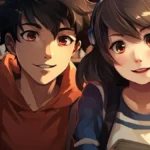In the fast-evolving world of digital assets, Non-Fungible Tokens (NFTs) have become a major player in art, gaming, and collectibles. As the market matures, creators are exploring new ways to generate unique, rare, and valuable NFTs. One of the most innovative methods to emerge is NFTRandomize—a process that integrates randomization into NFT creation to enhance uniqueness, rarity, and market appeal. This approach offers a new dimension for artists, developers, and collectors, allowing for more engaging and diverse digital assets.
What is NFTRandomize?
NFTRandomize is a concept that introduces randomness into the NFT generation process. By incorporating randomization, creators can generate NFTs with unique combinations of traits, ensuring that each asset in a collection stands out. The randomness is crucial for creating rarity, a core feature that drives demand in NFT marketplaces. Whether it’s background colors, facial expressions, or accessories, the ability to randomize elements provides a distinct advantage for creators looking to produce large collections of NFTs without compromising their individuality.
The power of NFTRandomize lies in its ability to automate the creation of NFTs, allowing for numerous unique combinations of traits while maintaining consistency in the overall design. This makes each token in a collection feel like a one-of-a-kind piece, even in large-scale releases.
Why Randomization Matters in NFT Creation
The use of randomization in NFT creation provides several key advantages:
- Enhanced Rarity: NFTs with randomly assigned traits are often more rare, particularly when creators assign varying rarity levels to different features. This scarcity directly impacts demand, as collectors are typically drawn to exclusive items.
- Improved Market Appeal: A well-randomized collection offers unpredictable traits that make each asset unique. This unpredictability boosts the appeal for collectors who value owning a distinct item.
- Streamlined Production: Generating large-scale NFT collections by hand can be time-consuming. NFTRandomize automates the process, saving time while ensuring that every NFT has a unique combination of traits.
- Increased Creativity: With randomization, creators can experiment with multiple traits and combinations without being confined to predefined designs. This encourages innovation and pushes the boundaries of creativity.
By leveraging randomization, artists and developers can create diverse, highly sought-after NFT collections while ensuring the final assets retain their uniqueness and value.
The Process Behind NFTRandomize
To understand how NFTRandomize works, let’s break down the key steps in the process:
1. Defining Base Layers and Traits
The first step in NFTRandomize is defining the base layers of the NFT. These layers can include various elements like background colors, facial features, clothing, accessories, and other design attributes. For each layer, creators specify multiple variations (e.g., 10 different background colors, 5 types of hats, etc.). Each of these traits will be combined randomly to generate different unique NFTs.
For example, a digital avatar collection might feature layers for the character’s eyes, hairstyle, and background, with each layer having several different options. This diversity ensures that every NFT in the collection is distinct.
2. Applying Randomization Logic
Once the base layers are defined, the next step is to apply randomization algorithms. These algorithms assign traits from each layer in a way that ensures every combination is unique. However, these algorithms can also be customized to meet specific requirements.
For instance, a creator may decide that certain traits—such as a rare hat or outfit—should only appear with specific backgrounds. By customizing the randomization logic, creators can maintain a balance between rarity and aesthetic cohesion, ensuring that certain rare combinations are preserved while still generating a vast variety of assets.
3. Generating and Minting NFTs
After randomizing the traits, the final step is minting the NFTs on the blockchain. Minting involves creating the token on a blockchain like Ethereum or Polygon and assigning metadata to the asset. The metadata contains details about the NFT’s traits, rarity, and ownership history, making it immutable and verifiable.
Once minted, each NFT is ready to be listed for sale, traded, or collected, and it is guaranteed to have a unique combination of traits that sets it apart from other tokens.
Benefits of Using NFTRandomize
The implementation of NFTRandomize offers numerous benefits for both creators and collectors:
1. Time Efficiency
For creators working on large collections, NFTRandomize significantly speeds up the production process. Rather than manually creating each unique asset, randomization tools automate the assignment of traits, allowing artists to focus on high-level design and conceptualization.
2. Market-Driven Value
NFTs with unique traits and rare combinations are highly coveted. By using randomization, creators can generate scarcity, which increases the value of NFTs in marketplaces like OpenSea or Rarible. The more unpredictable and rare the traits, the higher the demand for these tokens.
3. Customizability
NFTRandomize tools often come with customizable settings. Artists and developers can fine-tune the level of randomness, specifying which traits are more or less likely to appear. This ensures that the creative vision and brand consistency are not compromised.
4. Creative Freedom
Artists can experiment with combinations they may never have considered otherwise. Randomization enables them to break out of traditional design boundaries and produce fresh, novel works that could never have been conceptualized by hand.
Tools for Implementing NFTRandomize
Several tools facilitate the implementation of NFTRandomize, making it accessible to creators with varying levels of technical expertise:
- HashLips Art Engine: This popular tool is designed specifically for creating generative art with random traits. It allows creators to upload their layers and define the rules for randomization.
- NFT Maker: A user-friendly platform that offers a range of customization options for generating NFTs. It simplifies the process for beginners while offering flexibility for more experienced developers.
- OpenSea API: For creators looking to integrate randomized traits directly into their NFT listings on OpenSea, the OpenSea API allows customization of metadata and trait distribution.
- Chainlink VRF: Chainlink’s Verifiable Random Function (VRF) ensures that random trait assignment is truly random and verifiable, eliminating any concerns about manipulation or bias.
By utilizing these tools, creators can bring NFTRandomize to life in their projects, creating highly dynamic and collectible NFTs.
NFTRandomize in Popular NFT Projects
NFTRandomize draws inspiration from some of the most successful NFT projects that rely on random trait generation. For instance, CryptoPunks and Bored Ape Yacht Club are both prime examples of NFT collections where randomization played a key role in generating rarity and uniqueness within their traits. Although these projects may not specifically use NFTRandomize, the underlying principles of random trait generation are similar.
By using NFTRandomize, newer projects can replicate or innovate on these methods, attracting attention and enthusiasm from collectors and fans. The use of randomization also fosters competition, as creators strive to offer more exciting and unpredictable collections.
How NFTRandomize Enhances Collector Engagement
NFTRandomize adds an element of surprise to the collector experience. Since no two NFTs in a collection are ever the same, collectors feel a sense of excitement when purchasing an NFT, knowing that they may own a rare or highly desirable item. This element of discovery encourages collectors to actively engage with the community, trade their tokens, and showcase their acquisitions.
The randomness also builds a deeper emotional connection between the collector and their NFTs. Owning a one-of-a-kind asset fosters a sense of pride and exclusivity, which strengthens the overall value of the NFT within the marketplace.
Conclusion
NFTRandomize is more than just a tool for NFT creation—it’s a transformative concept that redefines how unique and rare digital assets are made. By integrating randomness into the design process, creators can produce highly diverse, marketable, and valuable NFT collections. Whether for small-scale projects or large, high-demand collections, NFTRandomize allows creators to push the boundaries of what’s possible in the digital art space while giving collectors something truly special. As the NFT market continues to grow, NFTRandomize is poised to be a key factor in shaping the future of digital asset creation.



